The diverse forms of life on Earth were initially described through observation (looking at things with the naked eye or through magnifying lenses and microscopes), focusing on gross structural features (large, visible parts) and observable phenomena. Before the rise of experimental biology (the study of living organisms through experiments), biology was primarily a field of natural history. This detailed description later informed reductionist biology (studying simpler components of complex systems), aiding research in physiology (the study of how organisms function) and evolutionary biology (the study of the evolutionary processes).
Examples of Plants and Animals:
- Zea mays (Corn)
- Oryza sativa (Rice)
- Homo sapiens (Humans)
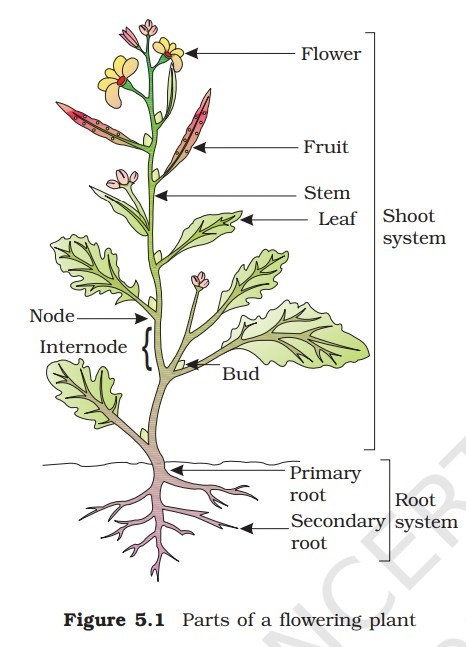
The Root
In most dicotyledonous plants (plants with two seed leaves), the radicle (embryonic root) elongates directly, forming the primary root. This root grows deep into the soil.
The primary root produces lateral roots (side roots) of various orders, such as secondary and tertiary roots. Together, they form the tap root system. An example is the mustard plant (Brassica juncea).
In monocotyledonous plants (plants with one seed leaf), the primary root is short-lived. It is replaced by many roots originating from the base of the stem.
These roots form the fibrous root system, commonly found in wheat plants (Triticum aestivum). Unlike the tap root system, these roots spread out more widely.
In some plants, like grass (Poaceae), Monstera (Monstera deliciosa), and the banyan tree (Ficus benghalensis), roots develop from parts other than the radicle. These are known as adventitious roots.
Root Cap and Its Functions
The root's apex is covered by a root cap (protective structure), which shields the delicate tip as it pushes through the soil.
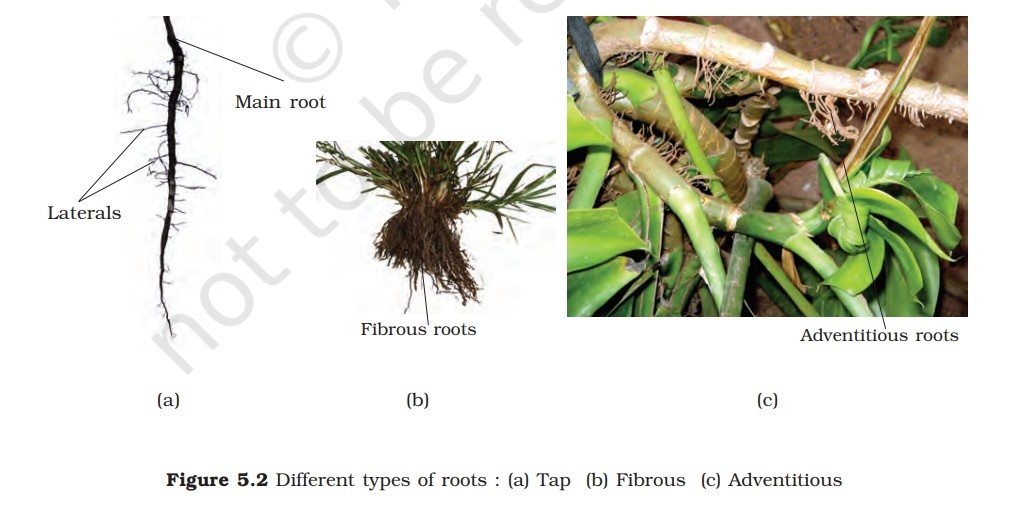
Regions of the Root
Just above the root cap lies the region of meristematic activity (area of cell division). Here, cells are small, thin-walled, and divide frequently.
Above this is the region of elongation (area of growth), where cells enlarge and contribute to root lengthening.
Next, the region of maturation (area of cell differentiation) follows, where cells mature and form root hairs (fine, thread-like structures). These root hairs absorb water and minerals.
This structure and organization help the root perform its main functions, including water absorption, anchorage, food storage, and hormone synthesis.
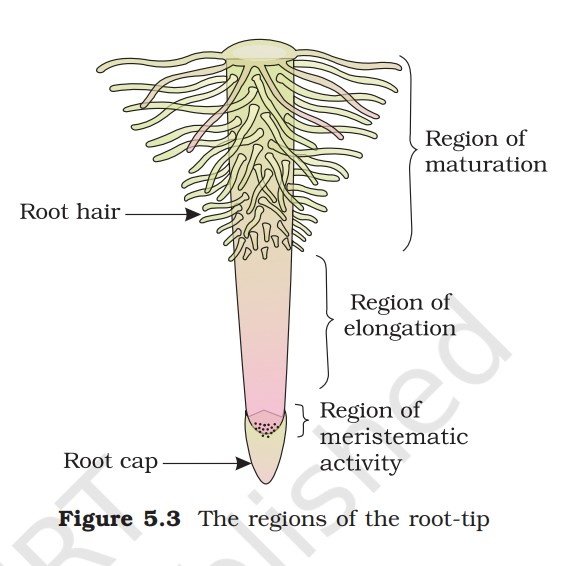
The Stem
The stem is the main ascending (upward-growing) part of the plant axis. It supports branches, leaves, flowers, and fruits. It originates from the plumule (young shoot) of a germinating seed.
The stem is divided into nodes (points where leaves emerge) and internodes (segments between nodes). Buds on the stem can be terminal (at the tip) or axillary (in the leaf axil).
Young stems are usually green, indicating active photosynthesis. As they mature, they often become woody (hard and brown). The stem's key roles include spreading branches and conducting water, minerals, and photosynthates (sugar products from photosynthesis).
In some plants, stems also serve as storage for food, provide support, offer protection, and aid in vegetative propagation (asexual reproduction). Examples include Solanum tuberosum (potato), Zea mays (corn), and Helianthus annuus (sunflower).
The Leaf
The leaf is a lateral, typically flattened structure that emerges from the stem. It forms at the node and carries a bud in its axil, which can develop into a branch.
Leaves are produced by shoot apical meristems (growth regions) and arranged in an acropetal (upward) sequence. They are crucial for photosynthesis (the process by which plants make their food).
A typical leaf consists of three main parts: leaf base, petiole, and lamina (blade). The base attaches the leaf to the stem and may have stipules (small leaf-like structures).
In monocots (plants with one seed leaf), the leaf base expands into a sheath (a covering around the stem). In some leguminous (pea family) plants, the base may become swollen, known as a pulvinus.
The petiole (leaf stalk) holds the blade to light and allows movement. The lamina is the green part with veins that provide rigidity and transport water, minerals, and nutrients. Examples include Cucumis sativus (cucumber), Solanum lycopersicum (tomato), and Ficus carica (fig).
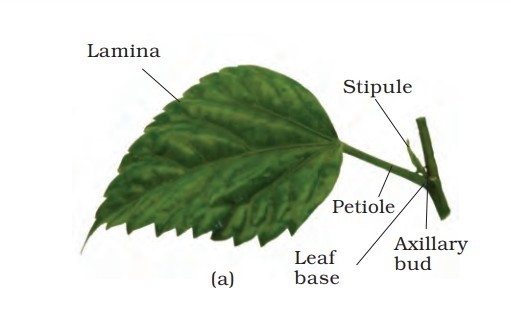
Venation
Venation refers to the pattern of veins and veinlets (small veins) in the leaf lamina. Reticulate venation (a network of veins) is common in dicots (two-seed-leaf plants).
Parallel venation (veins running parallel) is typical in monocots (one-seed-leaf plants). Examples with reticulate venation include Rosa spp. (rose), Cucumis sativus (cucumber), and Nymphaea spp. (water lily). Examples with parallel venation include Triticum aestivum (wheat), Zea mays (corn), and Oryza sativa (rice).

Types of Leaves
A simple leaf has a lamina (blade) that is whole or has incisions that do not reach the midrib. A compound leaf has incisions that reach the midrib, forming leaflets.
Pinnately compound leaves have leaflets on a common axis called the rachis (main vein). In palmately compound leaves, leaflets are attached at the tip of the petiole. Examples of pinnately compound leaves are Arachis hypogaea (peanut), Azadirachta indica (neem), and Moringa oleifera (drumstick tree). Examples of palmately compound leaves are Ficus carica (fig), Ricinus communis (castor oil plant), and Aesculus hippocastanum (horse chestnut).

Phyllotaxy
Phyllotaxy describes the arrangement of leaves on the stem or branch. The main types are alternate (one leaf per node), opposite (two leaves per node), and whorled (more than two leaves per node).
Alternate phyllotaxy is seen in plants like Helianthus annuus (sunflower). Opposite phyllotaxy is found in Calotropis procera (crown flower). Whorled phyllotaxy is observed in Alstonia scholaris (devil tree). Each arrangement impacts light capture and plant growth.
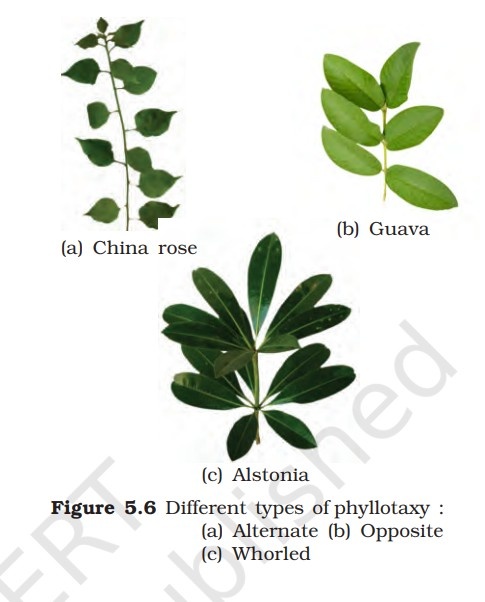
The Inflorescence
An inflorescence is the arrangement of flowers on a floral axis. There are two main types: racemose (main axis continues to grow) and cymose (main axis ends in a flower).
In racemose inflorescences, flowers are arranged laterally in an acropetal (upward) sequence. In cymose inflorescences, flowers are arranged in a basipetal (downward) sequence. Examples of racemose inflorescences include Brassica oleracea (cabbage), Lilium spp. (lily), and Orchidaceae (orchid). Examples of cymose inflorescences include Solanum nigrum (black nightshade), Euphorbia pulcherrima (poinsettia), and Cucurbita pepo (zucchini).
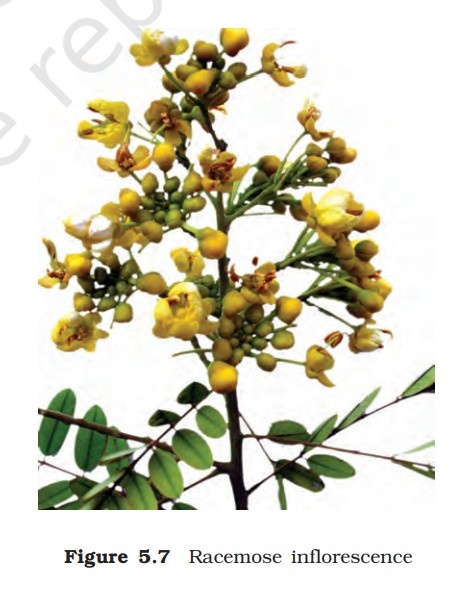
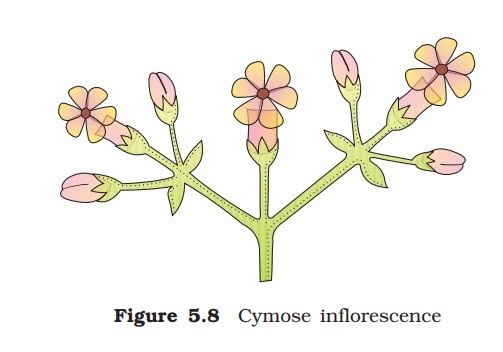
The Flower
Introduction to the Flower
The flower is a specialized reproductive structure found in angiosperms (flowering plants). It facilitates sexual reproduction and houses essential reproductive organs. Typically, a flower consists of four distinct whorls arranged on the thalamus (receptacle), which is the swollen end of the stalk or pedicel.
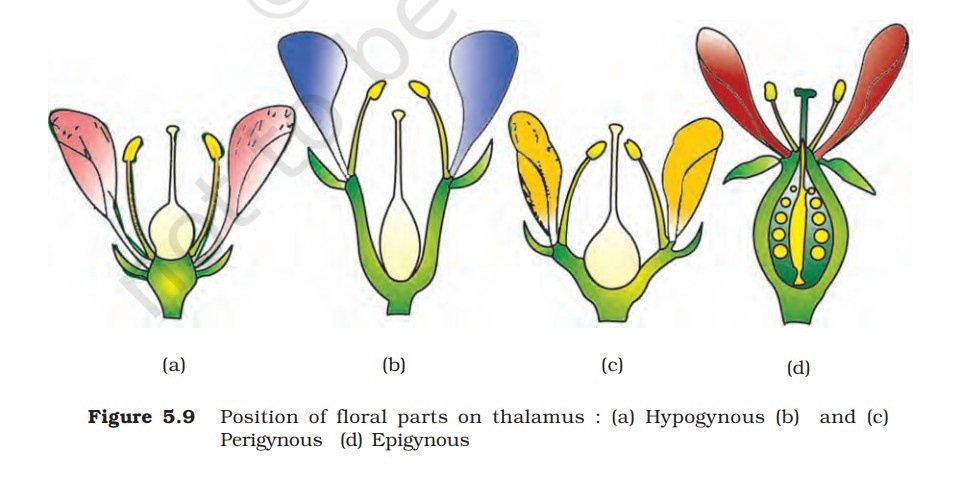
Floral Whorls
A typical flower is composed of four primary whorls:
- Calyx
- Corolla
- Androecium
- Gynoecium
These whorls are arranged successively on the thalamus.
Calyx: The Outer Whorl
The calyx is the outermost whorl of the flower and consists of sepals. Sepals are usually green and leaf-like, serving to protect the developing flower bud. The calyx can be:
- Gamosepalous: Sepals are fused together.
- Polysepalous: Sepals are separate and free from each other.
Examples:
- Rose (Rosa spp.)
- Tulip (Tulipa spp.)
- Lily (Lilium spp.)
Corolla: The Petal Whorl
The corolla is the second whorl and is composed of petals. Petals are often brightly colored to attract pollinators such as insects. The corolla can be:
- Gamopetalous: Petals are fused together.
- Polypetalous: Petals are free and distinct.
Examples:
- Sunflower (Helianthus annuus)
- Marigold (Tagetes erecta)
- Orchid (Orchidaceae family)

Androecium: The Male Reproductive Organs
The androecium is the third whorl and consists of stamens. Each stamen is made up of:
- Filament: The stalk that supports the anther.
- Anther: The pollen-producing part, usually bilobed with pollen sacs.
Stamens may be:
- Epipetalous: Attached to the petals.
- Epiphyllous: Attached to the perianth (flower parts).
Examples:
- China Rose (Hibiscus rosa-sinensis)
- Mustard (Brassica nigra)
- Cucumber (Cucumis sativus)
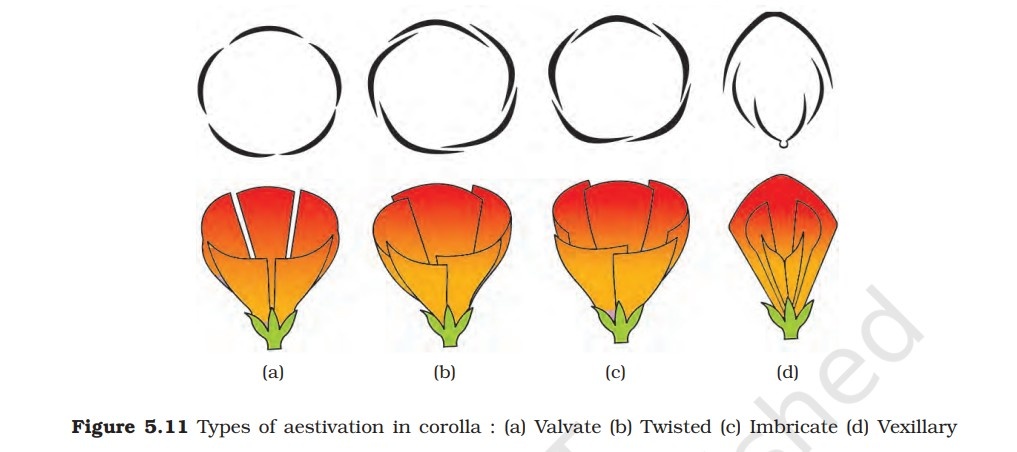
Gynoecium: The Female Reproductive Organs
The gynoecium is the innermost whorl and consists of one or more carpels. Each carpel includes:
- Stigma: The receptive surface for pollen.
- Style: The tube connecting the stigma to the ovary.
- Ovary: The enlarged basal part containing ovules.
The gynoecium can be:
- Apocarpous: Carpels are separate (e.g., lotus).
- Syncarpous: Carpels are fused (e.g., mustard).
Examples:
- Tomato (Solanum lycopersicum)
- Peach (Prunus persica)
- Pomegranate (Punica granatum)
Placentation: Arrangement of Ovules
Placentation refers to the arrangement of ovules within the ovary. Types include:
- Marginal: Placenta forms a ridge along the ovary's ventral suture. Ovules are borne on this ridge in two rows (e.g., pea (Pisum sativum)).
- Axile: Placenta is central with ovules attached in a multilocular ovary (e.g., china rose (Hibiscus rosa-sinensis)).
- Parietal: Ovules develop on the inner wall or peripheral part of the ovary. The ovary is initially one-chambered but becomes two-chambered due to a false septum (e.g., mustard (Brassica nigra)).
- Free Central: Ovules are borne on a central axis with no septa (e.g., Dianthus (Dianthus caryophyllus)).
- Basal: Placenta develops at the base of the ovary with a single ovule attached (e.g., sunflower (Helianthus annuus)).
Floral Symmetry
Symmetry in flowers is categorized as:
- Actinomorphic: Radial symmetry where the flower can be divided into equal radial halves (e.g., mustard (Brassica nigra)).
- Zygomorphic: Bilateral symmetry where the flower can be divided into two similar halves only in one vertical plane (e.g., pea (Pisum sativum)).
- Asymmetric: Irregular symmetry where the flower cannot be divided into two similar halves (e.g., canna (Canna indica)).
Aestivation: Arrangement in Bud
Aestivation refers to the arrangement of sepals or petals in the floral bud. Types include:
- Valvate: Margins of sepals or petals just touch each other (e.g., Calotropis (Calotropis gigantea)).
- Twisted: Margins overlap one another (e.g., china rose (Hibiscus rosa-sinensis)).
- Imbricate: Margins overlap in any direction (e.g., Cassia (Cassia fistula)).
- Vexillary: Specific overlapping order of petals (e.g., pea (Pisum sativum)).
Types of Flowers Based on Bracts
Flowers can be:
- Bracteate: Having bracts (reduced leaves) at the base of the pedicel.
- Ebracteate: Lacking bracts.
Examples:
- Bracteate: Poinsettia (Euphorbia pulcherrima)
- Ebracteate: Tulip (Tulipa spp.)
The Fruit
The fruit is a characteristic feature (a defining trait) of flowering plants (plants that produce flowers). It is a mature or ripened ovary (developed part of the flower) that forms after fertilization.
Parthenocarpic Fruit
If a fruit forms without the fertilization (union of sperm and egg) of the ovary, it is called a parthenocarpic fruit (fruit formed without fertilization). Parthenocarpic fruits are usually seedless.
Structure of the Fruit
Generally, a fruit consists of a pericarp (fruit wall) and seeds. The pericarp may be either dry (lacking moisture) or fleshy (soft and juicy), depending on the type of fruit.
Differentiation of Pericarp
When the pericarp is thick and fleshy (substantial and juicy), it is divided into three layers: the outer epicarp (outermost layer), the middle mesocarp (middle layer), and the inner endocarp (innermost layer).
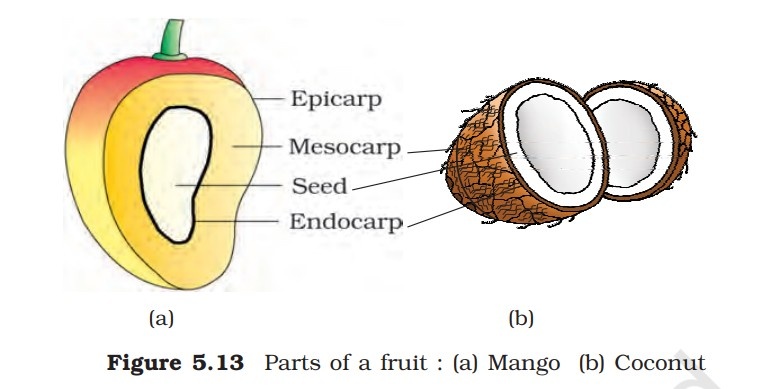
Drupes
In fruits like mango (Mangifera indica), coconut (Cocos nucifera), and olive (Olea europaea), the fruit is known as a drupe (a type of fruit). These fruits develop from monocarpellary superior ovaries (single-chambered ovary that sits above other floral parts).
Mango: A Well-Differentiated Drupe
In mango (Mangifera indica), the pericarp is well-differentiated into an outer epicarp (thin skin), a middle mesocarp (fleshy, edible part), and an inner endocarp (stony, hard layer protecting the seed).
Coconut: The Fibrous Drupe
In coconut (Cocos nucifera), which is also a drupe, the mesocarp is fibrous (made of fibers), providing protection and aiding in the dispersal of the fruit.
Scientific and Local Names
Examples
- Mango (Mangifera indica) - English name: Mango
- Coconut (Cocos nucifera) - English name: Coconut
- Olive (Olea europaea) - English name: Olive
Seed Development
Ovules (structures that develop into seeds) after fertilization (fusion of male and female gametes), develop into seeds. A seed is composed of a seed coat and an embryo.
Seed Components
The embryo consists of a radicle (embryonic root), an embryonal axis (central part), and one or two cotyledons (seed leaves). Examples: Zea mays (Maize), Triticum aestivum (Wheat), Cicer arietinum (Chickpea).
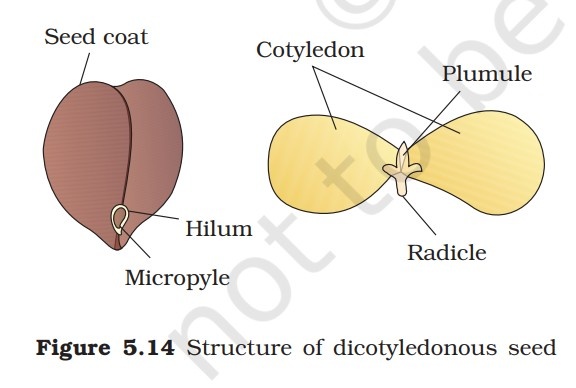
Dicotyledonous Seed Structure
The outermost covering is the seed coat. It has two layers: the outer testa (protective layer) and the inner tegmen (thin layer).
Hilum and Micropyle
The hilum (scar) marks where the seed was attached to the fruit. Above the hilum is a small pore called the micropyle.
Embryo and Cotyledons
Inside the seed coat is the embryo, consisting of an embryonal axis and two cotyledons. Cotyledons (seed leaves) are fleshy and store food.
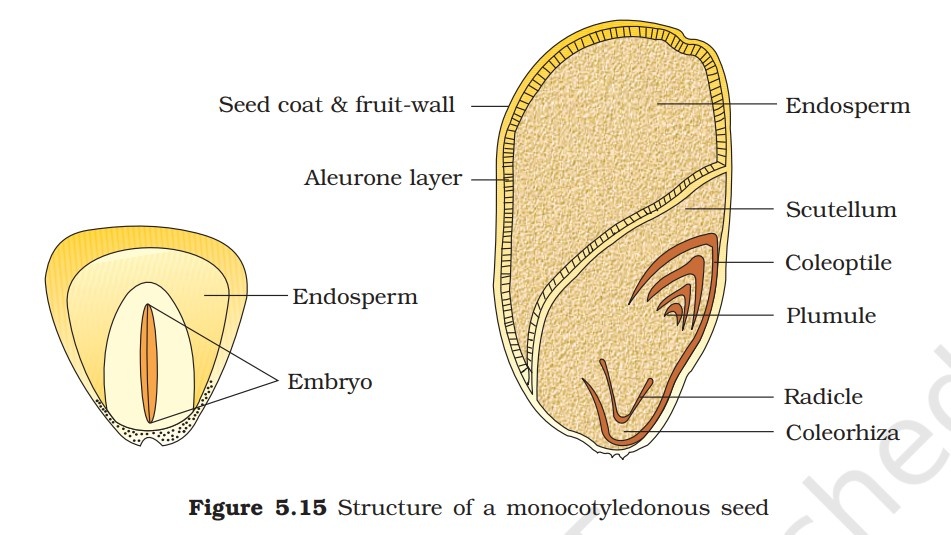
Radicle and Plumule
At both ends of the embryonal axis are the radicle (future root) and the plumule (future shoot). Examples: Pisum sativum (Pea), Glycine max (Soybean), Phaseolus vulgaris (Common Bean).
Endospermic Seeds
In some seeds like castor, the endosperm (food storage tissue) is present, forming endospermic seeds. Examples: Ricinus communis (Castor), Oryza sativa (Rice), Zea mays (Maize).
Non-Endospermic Seeds
In plants such as bean and pea, the endosperm is absent in mature seeds, forming non-endospermic seeds.
Monocotyledonous Seed Structure
Monocotyledonous seeds are usually endospermic. In cereals like maize, the seed coat is membranous (thin layer) and fused with the fruit wall.
Endosperm in Monocots
The endosperm is bulky and stores food. The outer covering of the endosperm is the aleurone layer (protein-rich layer).
Embryo in Monocots
The small embryo lies in a groove at one end of the endosperm. It consists of one large scutellum (cotyledon) and a short axis with a plumule and radicle.
Coleoptile and Coleorhiza
The plumule and radicle are enclosed in protective sheaths called coleoptile and coleorhiza. Examples: Triticum aestivum (Wheat), Oryza sativa (Rice), Zea mays (Maize).
Semi-Technical Plant Description
The morphological features (physical characteristics) of a flowering plant are described in a specific sequence, starting with habit (growth form), roots, stem, and leaves.
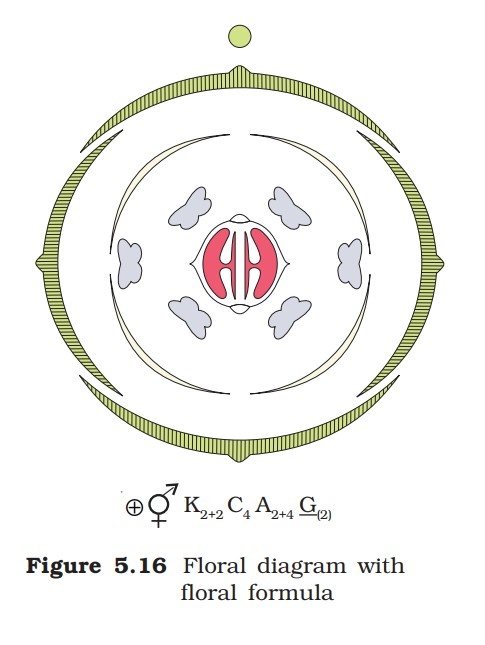
Floral Characters
The description continues with the floral characters (flower features), including inflorescence (flower arrangement) and individual flower parts (components).
Floral Diagram and Formula
A floral diagram (flower part arrangement) and floral formula (symbolic representation) are presented. The formula uses symbols like Br (bracteate), K (calyx), C (corolla).
Floral Symbols
Symbols in the floral formula represent various parts: P (perianth), A (androecium), G (gynoecium). Examples: Brassica juncea (Mustard), Solanum tuberosum (Potato), Datura stramonium (Jimsonweed).
Solanaceae Family
The Solanaceae family (potato family) is widely distributed in the tropics, subtropics, and temperate zones. Plants are mostly herbs, shrubs, or rarely small trees.
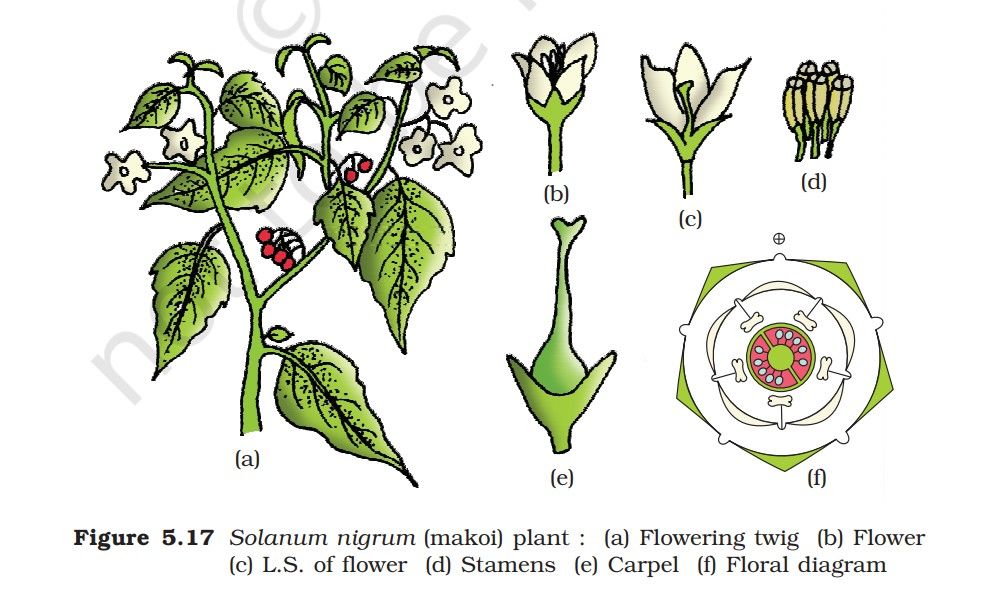
Stem Characteristics
The stem can be herbaceous or rarely woody, aerial (above ground), erect (upright), and branched. Examples: Solanum lycopersicum (Tomato), Capsicum annuum (Bell Pepper), Solanum tuberosum (Potato).
Leaf Characteristics
Leaves are usually alternate (arranged alternately), simple (single leaf), or rarely pinnately compound (feather-like arrangement), with reticulate venation (network of veins).
Floral Characters
Inflorescence
The inflorescence (arrangement of flowers) can be solitary, axillary, or cymose (branching) as seen in Solanum (a genus including nightshades).
Flower
The flowers are bisexual (having both male and female parts) and actinomorphic (radially symmetrical).
Calyx
The calyx consists of five sepals (flower outer parts) that are united and persistent. They exhibit valvate aestivation (sepal arrangement before blooming).
Corolla
The corolla has five petals that are united, with valvate aestivation (petal arrangement before blooming).
Androecium
The androecium (male part) has five stamens (pollen-producing parts) that are epipetalous (attached to petals).
Gynoecium
The gynoecium (female part) is bicarpellary (two carpels), syncarpous (carpels fused), with a superior ovary, bilocular (two-chambered), and axile placentation (seed attachment).
Fruits
Fruits produced can be a berry (fleshy fruit) or a capsule (dry fruit).
Seeds
The seeds are numerous and endospermous (having stored food for the developing embryo).
Floral Formula
The floral formula is ⊕ (indicating a complete and symmetrical flower).
Economic Importance
Many plants from this family are economically valuable. For example:
- Tomato (Solanum lycopersicum) - a food source
- Chili (Capsicum annuum) - used as a spice
- Belladonna (Atropa belladonna) - used in medicine
Other notable plants include potato (Solanum tuberosum), ashwagandha (Withania somnifera), tobacco (Nicotiana tabacum), and petunia (Petunia spp.).


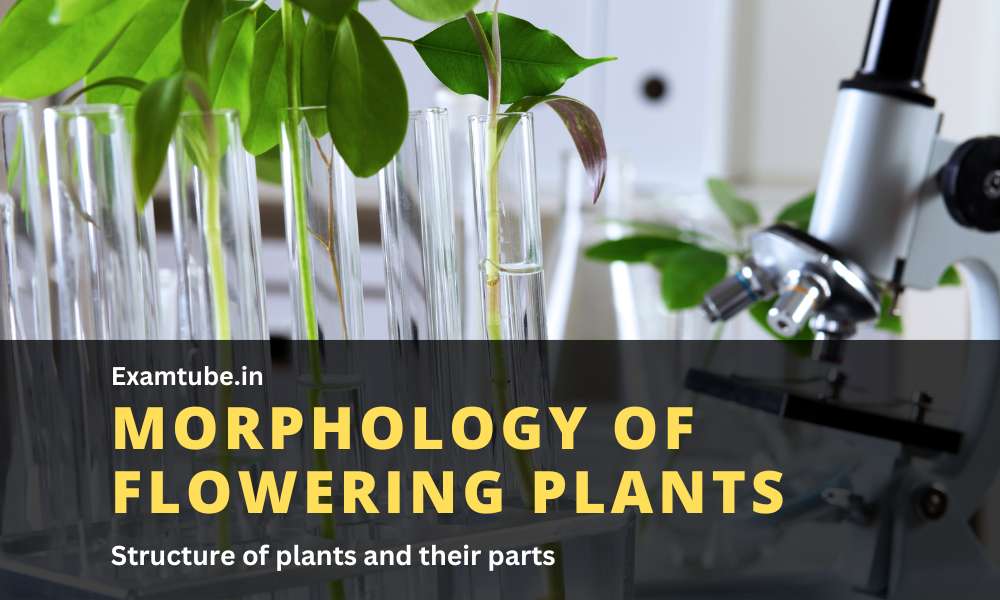
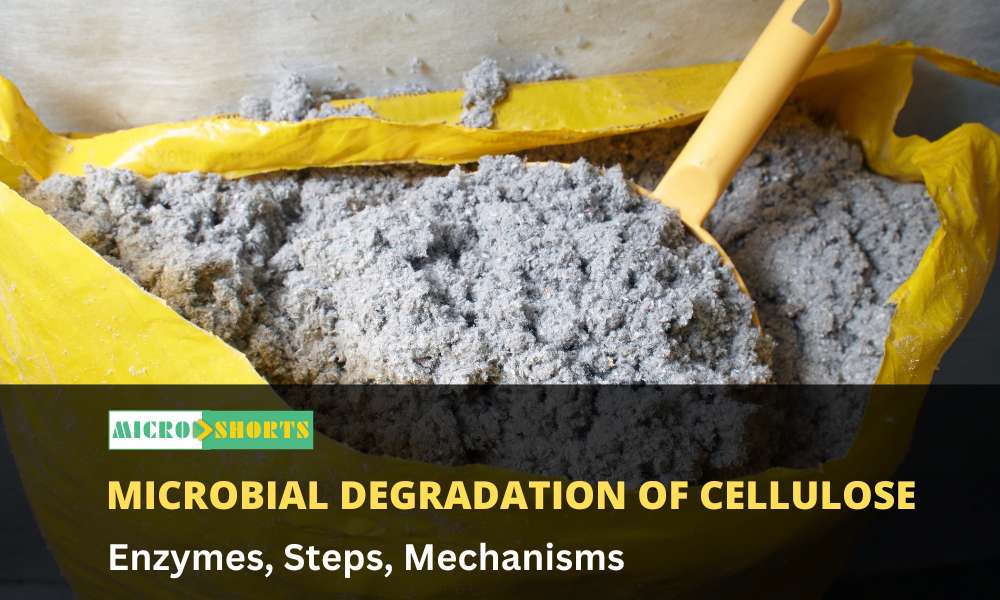


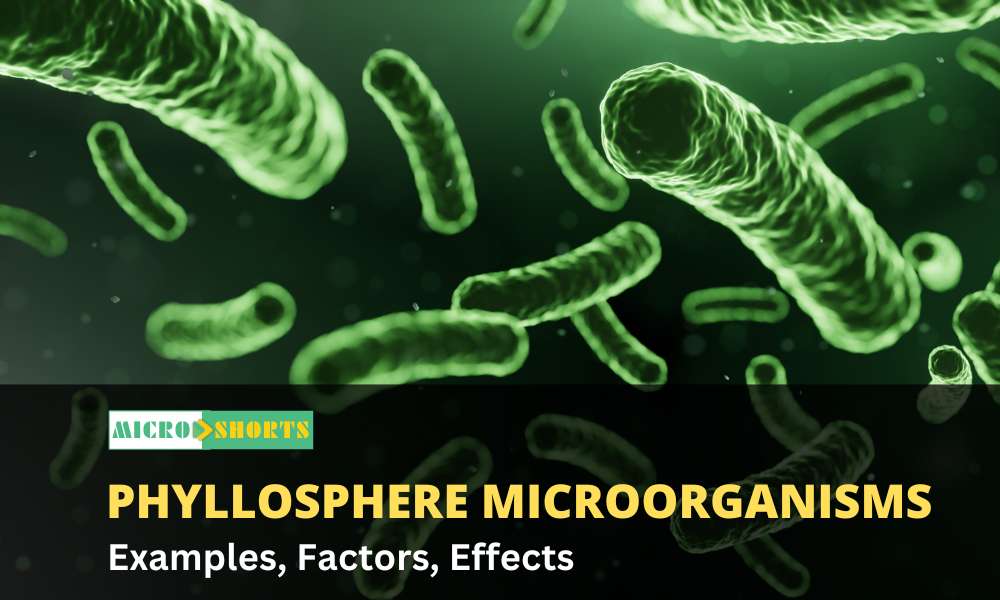


Comments